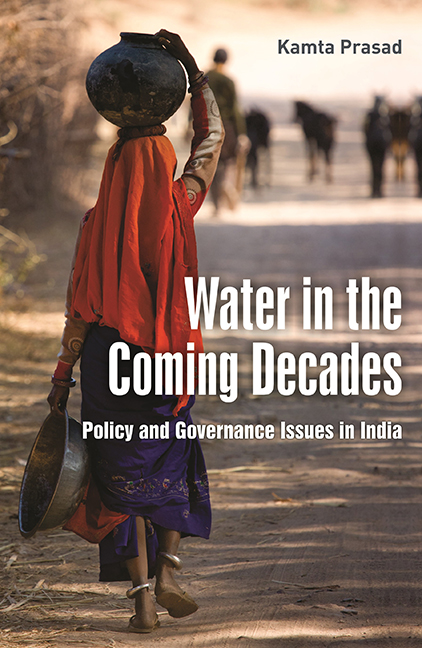Book contents
- Frontmatter
- Dedication
- Contents
- List of Tables
- List of Abbreviations
- Preface
- Acknowledgements
- Section I Overall Perspectives
- Section II Situational Analysis
- Section III Socio-economic, Institutional and Environmental Aspects
- Section IV Technological Options
- Section V Concluding Observations
- References
- Index
6 - Problems of Canal Irrigation Management
Published online by Cambridge University Press: 13 July 2022
- Frontmatter
- Dedication
- Contents
- List of Tables
- List of Abbreviations
- Preface
- Acknowledgements
- Section I Overall Perspectives
- Section II Situational Analysis
- Section III Socio-economic, Institutional and Environmental Aspects
- Section IV Technological Options
- Section V Concluding Observations
- References
- Index
Summary
Canal irrigation development has well-known achievements to its credit. But, its management has been beset with a few problems such as underutilization of potential created, low water use efficiency, time and cost overruns, launching unapproved projects, increase in per hectare cost of creating irrigation potential of major and medium projects, maintenance, etc. These problems are discussed in this chapter.
Underutilization of canal irrigation potential
Underutilization of large and medium irrigation projects, which mainly comprise canals operated by state governments, has been a major concern in India from the very beginning of the planning process. The Third Plan had suggested specific measures (discussed later on) for securing speedy benefits from irrigation projects. But, the problem has been persisting despite measures taken from time to time. Table 6.1 provides a synoptic view of the problem since 1951.
Figures of underutilization, given in Table 6.1, should be, however, regarded as approximate since precise estimates are hardly available. All India figures are aggregated figures as furnished by states, which do not follow a uniform methodology for the same. For example, the gross area actually irrigated during the year by a particular scheme is termed as ‘Potential Utilized’ in the states of Andhra Pradesh, Haryana, Punjab and Tamil Nadu. But, in the states of Bihar and Uttar Pradesh, the maximum irrigation achieved by a project in any year is termed as its potential utilized. A still different method is followed in Gujarat and Maharashtra. Besides, the system of monitoring and verifying information provided by executing agencies on both potential and actual utilization has been inadequate and casual along with substantial reporting and compilation errors in the data.
The generally accepted definition of potential created and utilized is provided by the Planning Commission in its letter of 1973. According to the definition, the ‘irrigation potential’ utilized is the total gross area actually irrigated by a project during the year under consideration, while the potential created is the aggregate gross area that can be irrigated annually by the quantity of water that could be made available by the connecting and completed works up to the end of water course or the last point in the water delivery system up to which Government is responsible for construction. The data provided in Table 6.1 should be interpreted in the light of this definition.
- Type
- Chapter
- Information
- Publisher: Foundation BooksPrint publication year: 2014



